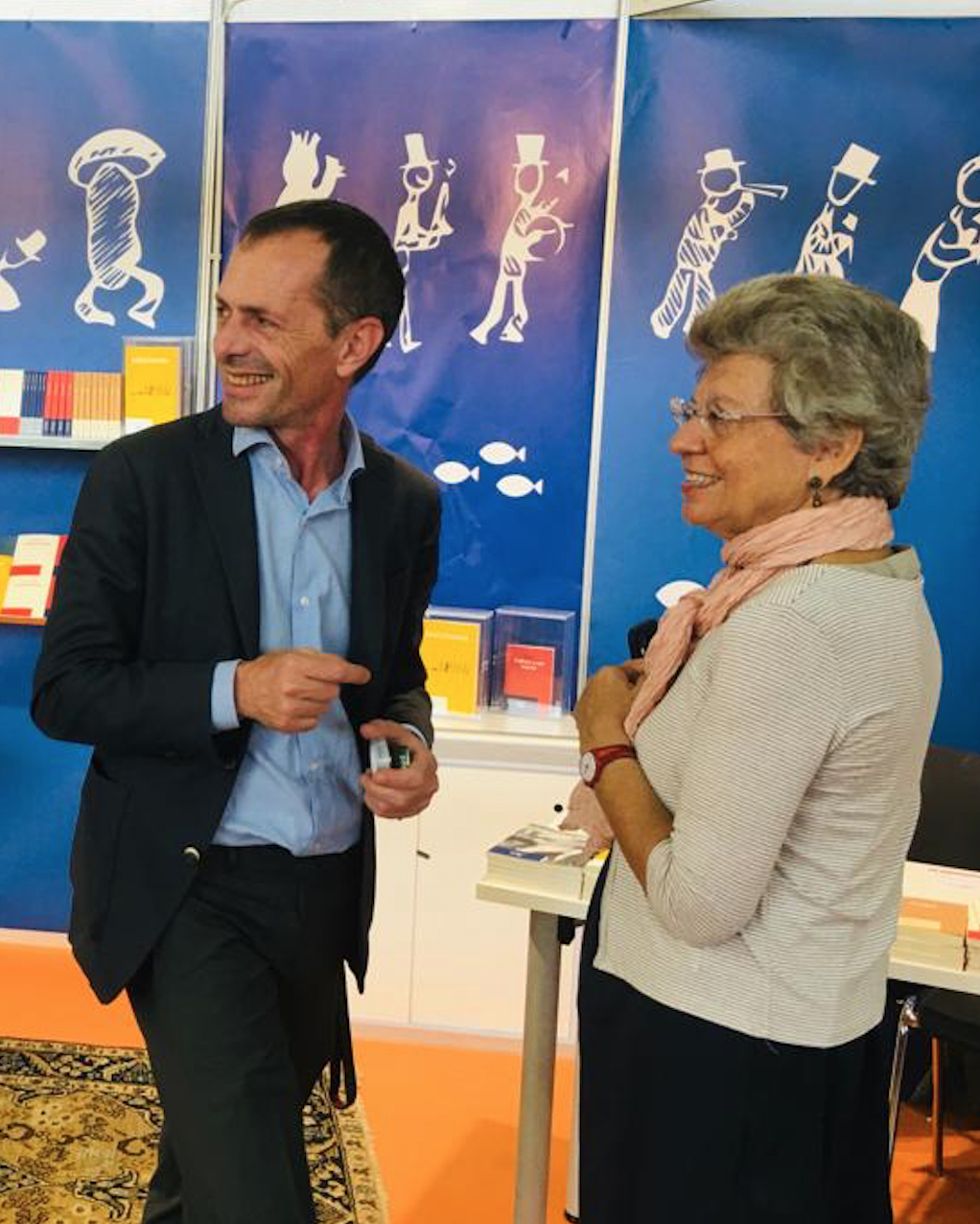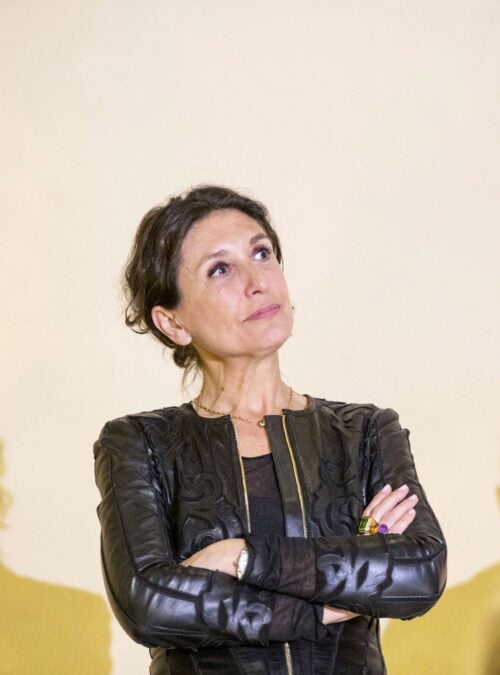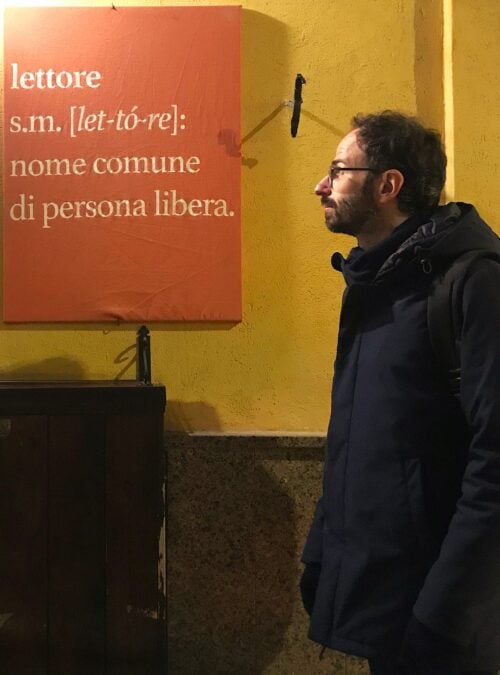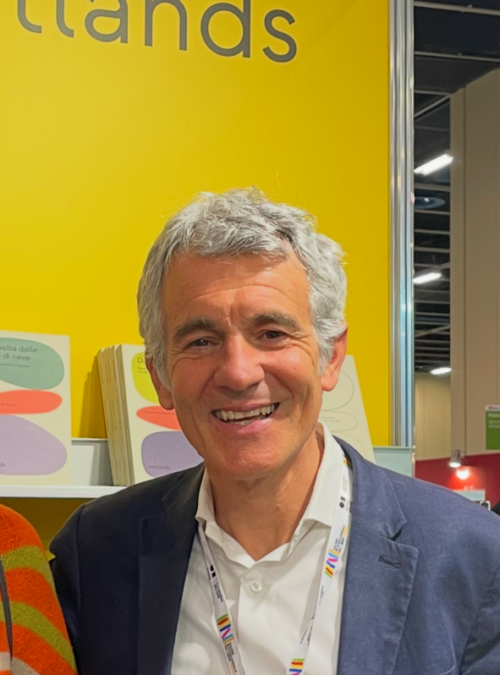Interview with the publishers Anna Foà and Marco Sodano (Acquario Libri)
Author: Maria Sica, Director of the Italian Cultural Institute in Tel Aviv

Anna Foà worked for many years for the publishing house Adelphi. Marco Sodano has thirty years of journalism behind him and currently works at La Stampa newspaper. In 2019 they created Acquario Libri.
What is an independent publishing house?
Our publishing house is not part of the distribution system of the big groups, where most publishing houses are concentrated. The major Italian publishers also have the largest distribution system in the country. This is a very Italian anomaly. By remaining outside this distribution system, which dictates production schedules to publishers, we are able to work more effectively with independent bookshops. We believe in the selective work that these booksellers do, and in their ability to offer the public titles from publishers who can’t afford to invest heavily in advertising and who are disengaged from the publishing mainstream. It’s a world, that of the big publishers, that doesn’t convince us very much because it’s too closely linked to current events, fashions and the usual round of celebrities. It’s a world that gives very little, and less and less, over to the curiosity and risk-taking that, in our view, are the very essence of editorial work.
How would you define your publishing house, and I’d also like to ask you whether for you independence means anti-conformism.
Being independent means following our own logic, without being conditioned by pre-established patterns: in that sense, we are certainly very non-conformist. But we’re not necessarily anti-conformist either. We are two publishers who have brought together a group of collaborators and friends with different skills: the method is the one used in the past for magazines, based on a ground agreement between people. The books must appeal to us. We are thinking of Paola Lenarduzzi, who takes care of the graphic design of our covers and who also works with publishers much bigger than us, and of our printer Glauco Daverio (Lvg), who guarantees a quality of printing, materials and binding that puts our books on a par with those of the big quality publishing houses. And also to the work of the team that looks after the texts and all the illustrations that accompany them.
What is the project and the idea behind Acquario?
We decided to make books that we love (books that often remain on the fringes of the publishing scene). We invest a lot in the quality of our books, and thinking about quality as a starting point changes a lot of parameters. That doesn’t mean we have to take refuge in a ‘small old world’. On the contrary: while we are very focused on the craft aspect of this work, we feel free to explore other worlds with new techniques. We use the digital world, a mine of opportunities, in a way that we have thought about, wanted and imagined. Our books have been in the Metaverse since the founding in 2019. This is not the frenetic (or even hysterical) use we see of social networks, podcasts and ebooks. We are using digital technology to extend the boundaries of the book. Each volume contains a QR code, through which you can access a
space that extends the scope of the book: author’s documents, edited like everything else, and reserved for those who buy the book. We’ve called it Web Side: for some titles, it’s a short film that tackles themes similar to those in the book; in one volume, we’ve included a selection of chapters read by an actress and set to music by an orchestra; when we published Gila Almagor‘s first title, L’estate di Aviha (The Summer of Aviha), the strength of the author, a real character, convinced us that the right idea was to do an interview with her. The new, the old and the well-done are not directly related.
The birth of an independent publishing house often coincides with an act of rebellion, stemming from the will of a courageous person who was already gravitating towards the world of publishing and literature, but who at some point felt the need to enter the publishing market and present themselves as an alternative. Can you tell us about the circumstances in which the project came about?
In our case, two different paths came together: one, Anna Foà, came from a long history in publishing, the other, Marco Sodano, from a long editorial career in newspapers. We both shared basic ideas, an old-fashioned spirit and an allergy to certain stereotypes. By making books with clear ideas, we found the meeting point. We wouldn’t call it anti-conformism, the question isn’t against whom, but rather what stories we want to get out, or rather publish. And to do that, you have to take paths that are a little less travelled, that we wouldn’t call alternatives, but free paths. “The goal is formed by living”, says Bazlen, our spiritual guide, a great explorer of books and ideas.
Can you tell us about your relationship with the reading public?
We write books, even complex ones, to appeal to the curiosity of readers who are not experts in the subject. We work to make every subject understandable and readable for everyone. Similarly, our events are built by mixing plans and skills, crossing different worlds: reading, music, visual arts, drawings, podcasts and videos. We felt that book presentations had turned into rituals that were increasingly repetitive and less and less able to attract audiences.
How is the publishing programme organised?
Freed from the constraints of distribution, we decide for ourselves which books to publish and how many. We publish an average of 4 to 5 books a year.
Tell us about the Jewish ‘component’ of the Acquario Libri catalogue. How did it come about? How are the titles chosen?
Judaism is a background that Anna Foà brings to Acquario, but the texts are only published if they convince the two publishers, and if they are good, they will also show the lesser-known sides of Israel, a country that is often the victim of stereotypes. That said, there are two important aspects to bear in mind: the first is that we scout in Israel, thanks to translators and publishers with whom we have very strong relationships. This is how, for example, we came across titles by Gila Almagor that, curiously, no Italian publisher had yet translated. Secondly, Jewish culture, with its ability to weld deep reflection with irony and disenchantment, is a field
that a publisher looks at with curiosity. And of course, this is not just the case in publishing.
When we met in Tel Aviv, Anna Foà talked about graphic design and the new project that has affected the entire catalogue since 2019, making your books very recognisable and beautiful. Is graphic design one of your personal passions?
Yes, graphic design is a passion and for us it’s of crucial importance. It’s not something that’s added to the text, it’s an integral part of the work. Aesthetics and content are linked. We are both publishers and we create the books with the graphic designer Lenarduzzi and the printer Daverio. From the text to the book, we decide together. The graphic design has to be clean, clear and consistent, and it has to give an image at first glance that sets it apart from other publishers.
Do you remember a particular book that represents Acquario?
As publishers, we find it difficult to answer such a question. Our way of working inevitably leads us to titles in which we believe very strongly and which all reflect our way of seeing the world through books. We’re thinking of Bazleniana, a tribute to our ‘tutelary divinity’, which shows his drawings for the first time and is conceived as a conceptual album in which the fundamental characteristics of the two Acquario publishers come together: the editorial history and the spirit of the review. On the other hand, we published Fallisci e sei morto by Giulia Vola, a story about migration to European countries that unfolds in reverse, travelling to the migrants’ countries of origin. In the same vein, we published André Kaminski‘s Il terremoto d’Agadir, which shows us a European in the 1960s able to depict the complexity and sophistication of North African societies seen with new eyes, able to see the limits of us Westerners who identify them as underdeveloped. But we don’t want to exclude any of our titles: it’s the catalogue that represents Acquario, the thread that gives the collection its meaning.
Which book or author has given you the most satisfaction? And on the other hand, a book or an author on which you have invested a lot and which has disappointed you?
When one of our titles sells less well than the others, we ask ourselves what we can do to improve communication and distribution. Where we can organise an additional event, and who we can call on to raise awareness. None of our titles have disappointed us, although some have sold less well than expected. But that’s the game. And we have plenty of time to catch up with our audience. In the four years of Acquario’s existence, we’ve never waved a white flag for a book that didn’t sell as well as expected. Another point on which we feel free compared with the traditional distribution system is the concept of novelty. We continue to organise events even for books that came out two or three years ago: if the opportunity arises, if someone asks us, if one of our authors has a good idea, we do it. Our motto is: if you haven’t read it, it’s new.
What new Acquario books do you recommend we read next?
As we’ve already said, for us all titles are on the same level, every title in the catalogue is new
to us and can last for years. No title has a fleeting life. Among those released this year, we recommend L’ultima sigaretta (The Last Cigarette) by Riccardo Cepach, an amusing pamphlet on smoking, a different way of getting to know Svevo, taking him out of the dust of academia.










